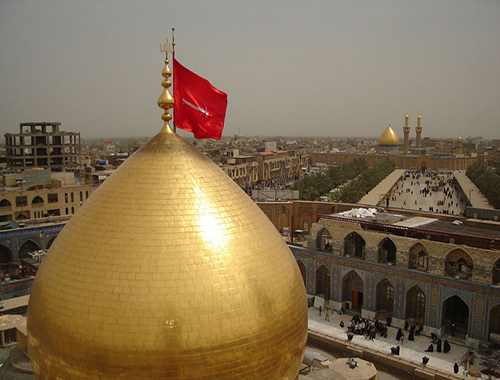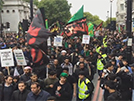Chapter 5-Hadīthī-Historical Books
- Details
- Hits: 3036
Chapter 5
Hadīthī-Historical Books
--------------------------------------------------------------------------------
Undoubtedly hadÄ«th and history are closely intertwined in Islam. Some times more emphasis has been laid on history and at other times more on hadÄ«th. Many historical issues are found in the book al-kÄfÄ«. Among the Shi‘ite hadÄ«thÄ« works of the 3rd and 4th centuries AH, as is the case with Sunni books of hadÄ«th, plenty of historical material is found. In al-kÄfÄ«, the section dedicated to discussion of the Imamate, also includes historical issues about the lives of the Imams’ (‘a). Unfortunately, no other early Shi‘ite book like al-kÄfÄ« has remained extant to throw more light on such issues. Perhaps one can point to BasÄ’ir al-DarajÄt which contains some historical material.
The most outstanding work concerning the life of Imam RizÄ (‘a) is Shaykh Saduq’s masterpiece ‘Uyun AkhbÄr al-RizÄ. The life of the 8th Imam (‘a) and the situation of the Shi‘ites of that period has been fully reflected in this book. Saduq’s other works also contain more or less historical ahÄdÄ«th. His book ‘Ilal al-SharÄ’i‘ is among the most outstanding in this regard. One can also find similar narrations in Saduq’s AmÄlÄ«. Since Saduq lived at a time when the great literary current for compiling voluminous books was about to start, and used in his books most of the early heritage of the Shi‘ites – part of which was on the point of being lost forever to posterity – his works are considered quite valuable from an historical point of view.
Three valuable books remain with regard to the ghaybah (occultation) of Imam MahdÄ« (‘a), each of which reflects an important part of the Shi‘ite history during the third century. The books KamÄl al-DÄ«n by Saduq, al-Ghaybah by Shaykh TusÄ« and al-Ghaybah by Nu‘mÄnÄ« are the most important works in this connection. Shi‘ite history in this period is based on these few works since many other similar works are not extant today. Two examples are the works of the third century scholar Muhammad bin Bahr RahnÄ«, part of which is mentioned in KamÄl al-DÄ«n.
Among the hadith corpus, mention should be made of the manÄqib books. Such works also constitute a kind of historiography. Among the earliest books in this regard is ManÄqib al-Imam AmÄ«r al- Mu’minÄ«n (‘a) by Muhammad bin SulaymÄn QÄzÄ« al-KufÄ« who lived in the third century.[29] This book is full of historical information on the characteristics of Prophet Muhammad (S) and the life of AmÄ«r al-Mu’minÄ«n (‘a). Despite the fact that its compiler is a Zaydi Shi‘ite the book contains many narrations from Imam BÄqir (‘a).
Like the above mentioned work, among the IsmÄ‘ilÄ« Shi‘ites one can point to the valuable book Sharh al-AkhbÄr by QÄzÄ« Nu‘mÄn bin Muhammad TamÄ«mÄ« MaghribÄ« (d. 363) who compiled many books and was the most outstanding IsmÄ‘Ä«lÄ« scholar during the Fatimid rule in Egypt and North Africa. This book which has recently been published[30] deals with the merits of the Prophet’s Ahl al-Bayt (‘a) and is also very rich in historical information. For example the first, second and third sections describe Imam ‘AlÄ«’s (‘a) merits in the words of Prophet Muhammad (S), his companionship of the Prophet and his participation in the Battles of Badr, Uhud, Khandaq and other expeditions. The fourth section of the book is on the Battle of Jamal and the War of Siffin. The fifth section is continuation of the narrations on Siffin. The sixth section deals with the filthy characteristics of the enemies of Imam ‘AlÄ« (‘a) especially Mu‘Äwiyah and his killing of Hujr bin ‘AdÄ«. The seventh to tenth sections describe the virtues of AmÄ«r al-Mu’minÄ«n (‘a). The eleventh section is the continuation of the merits of the Ahl al-Bayt, especially Hadhrat FÄtimah (‘a). The twelfth section discusses the merits of Imam Hasan (‘a), his life and the martyrdom of Imam Husayn (‘a). The thirteenth section is continuation of the sufferings of the Ahl al-Bayt (‘a) and also talks about other outstanding members of the BanÄ« HÄshim such as Ja‘far ibn AbÄ« TÄlib and other descendants of the Prophet’s grandfather ‘Abd al-Mutallib. This section also focuses on the merits of Imam Zayn al-Abidin (‘a) and Imam Muhammad BÄqir (‘a). The fourteenth section is on Imam SÄdiq (‘a), the history of Shi‘ite sects till the time of Mu‘tazid al-‘AbbÄsÄ«, and the appearance of the Fatimid MahdÄ«. The fifteenth section is one the characteristics of the promised MahdÄ« and the sixteenth and last section on the characteristics of the Shi‘ites. Although it has distinctive IsmÄ‘ilÄ« tendencies, the book is a valuable, comprehensive and accredited work on the history of the Ahl al Bayt (‘a), and in view of its antiquity it is considered unique within its own time frame.
If we take into account that QÄzÄ« Nu‘mÄn has relied on al-TabarÄ«’s lost work al-WilÄyah for the event of GhadÄ«r, then we will come to know the importance of this work and its contents in view of the books and treatises that were available to him and which are not extant today, although, unfortunately, he does not always mention the sources of his quotations. al-‘Umdah by Ibn BitrÄ«q is also considered among these works.
Notes:
[29] Refer to TÄrÄ«kh al-TurÄth al-‘ArabÄ«, al-TadwÄ«n al-TÄrÄ«khÄ«, pp. 208, 209. This book has been researched by ‘AllÄmah Muhammad BÄqir MahmudÄ« and published in three volumes by Majma‘ al-IhyÄ’ al- ThiqÄfah al-Islamiyyah.
[30] This book has been published in both Lebanon and Iran. DÄr al-Thaqalayn Publishers, Beirut; The IntishÄrÄt-e Islamiyyah edition has been researched by Sayyid Muhammad HusaynÄ« JalÄlÄ«.











